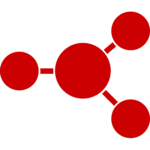Project 3
Integrating experimental and field studies to understand PFAS bioaccumulation and impact in aquatic food webs
Co-Investigators: Scott Belcher, David Buchwalter, Antonio Planchart
Per- and polyfluoroalkyl substances (PFAS) are a class of almost 5,000 known chemicals that are of emerging concern because they are environmentally persistent, ubiquitous, and have been shown to bioaccumulate in a wide variety of organisms. Because these mobile chemicals are released directly into aquatic ecosystems, there is an immediate need to better understand their bioaccumulation potential and toxicity to aquatic organisms, and ultimately, to people who rely on these aquatic resources for drinking water and food. This project specifically focuses on the bioaccumulation and toxicity of PFAS in an aquatic food web context by linking ecologically relevant laboratory bioaccumulation studies and toxicity evaluations with field studies to characterize how and why PFAS are differentially accumulative and toxic to aquatic organisms.
In the US, production of “legacy” PFAS such as PFOA and PFOS has been voluntarily phased out due to concerns about their bioaccumulation in food webs and associations with adverse health outcomes in people. The newer generation replacement PFAS are largely uncharacterized with respect to their bioaccumulation potential and toxicity. There is currently great uncertainty regarding how PFAS structures are associated with bioaccumulation potential and toxicity due to the sheer number of new compounds produced and the inability to date to consider all relevant exposure pathways in laboratory experiments. Typically, persistent bioaccumulative chemicals have significant trophic transfer potential, yet laboratory exposures to aquatic organisms usually focus on aqueous exposure pathways and dietary exposure pathways are often ignored. Field-based studies that measure the net bioaccumulation from all exposure sources typically link contaminant concentrations in organisms to water concentrations, despite the fact that: 1) water might not be the most relevant exposure route, and 2) even if water is the most relevant exposure pathway, dissolved concentrations present on a given day (usually that same day that organisms are sampled) may not reflect the past exposure conditions leading to the observed tissue concentrations.
To address these major uncertainties, we propose to integrate laboratory and field studies to provide foundational understanding of the bioaccumulation potential and toxicity of different PFAS in a food web context: The overall goal of this needs-based proposal is to link PFAS bioaccumulation potential and toxicity to structural attributes so that predictive models can emerge to help define and manage risk from these environmentally ubiquitous contaminants.
The three specific aims of this project are:

Specific Aim 1. Characterize the freshwater bioaccumulation dynamics of individual and environmentally relevant mixtures of PFAS in three trophic levels.
Laboratory studies will quantify and compare the bioconcentration kinetics of individual PFAS in periphyton (1º producer), mayflies (1º consumer), and zebrafish (2º consumer). Trophic transfer studies will characterize periphyton to mayfly to zebrafish trophic transfer. We hypothesize that PFAS will vary in their bioaccumulation and trophic transfer potential on the basis of chemical structure.

Specific Aim 2. Assess the toxicity of individual PFAS and their mixtures in zebrafish.
Most hazard assessments exclusively examine direct toxicity from water while ignoring the potential for toxicity from diet-derived exposures. To rectify this gap, we will compare the toxicity from aqueous exposures to toxicity from dietary exposures when relevant. We will use zebrafish as an ecological model of fish health to test the hypothesis that, for some PFAS, dietary exposures may contribute to toxicity.

Specific Aim 3. Determine the presence, persistence, bioaccumulation, and health impacts of PFAS in aquatic wildlife species.
Specifically, this study will determine the relative degree to which PFAS bioaccumulate in different trophic levels, focusing on the heavily impacted Cape Fear River and surrounding aquatic ecosystems. Further, this work will determine if exposures are associated with clinical measures of adverse health impacts including immune function in exposed wildlife. We hypothesize that PFAS will vary in their tendency to bioaccumulate as a function of organism age and size and with increased concentrations in apex predators.
This research project will work closely with other Projects and Cores within this Superfund Center to provide foundational understanding of ecologically relevant PFAS exposures, bioaccumulation, and effects on aquatic organisms. The research will inform the analysis of human exposures via fish consumption and identify appropriate exposure pathways for future laboratory exposures in aquatic models
